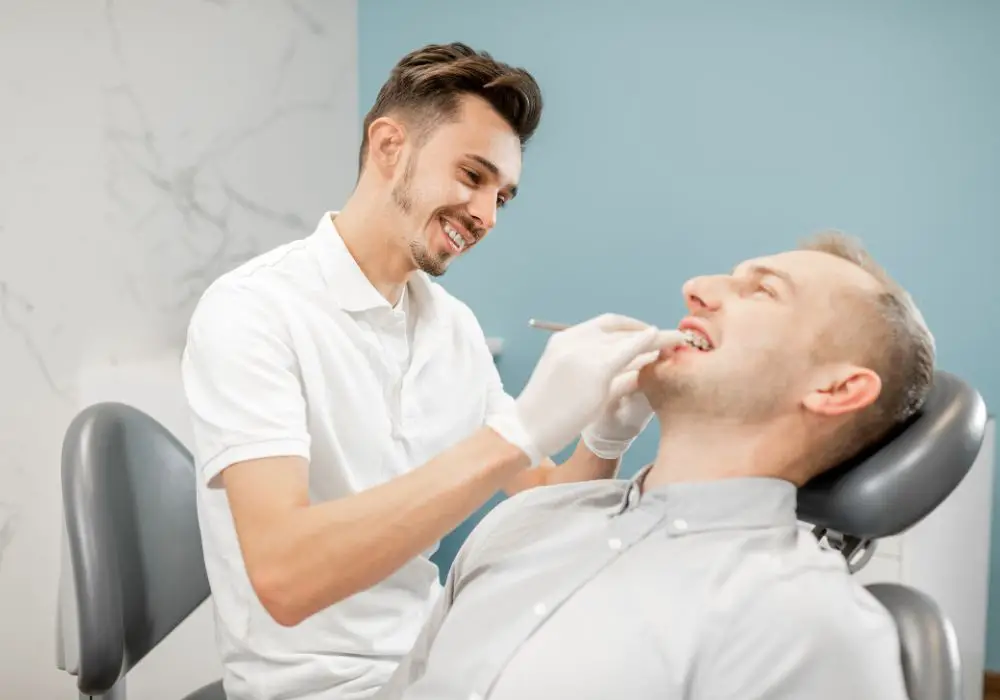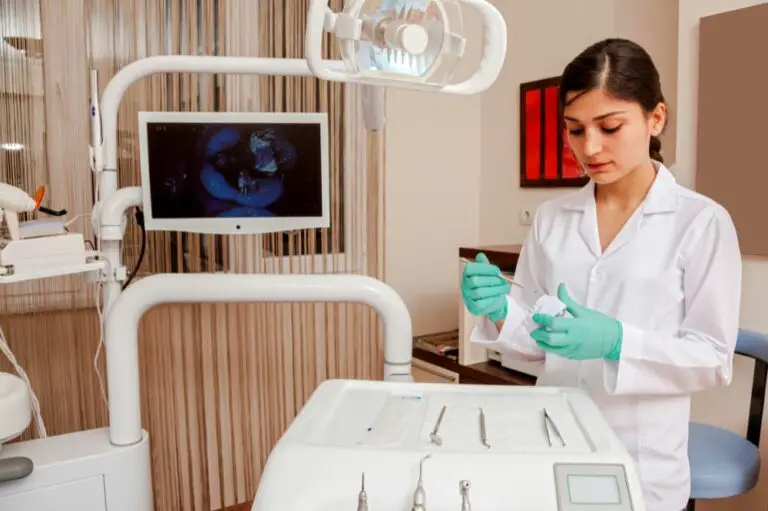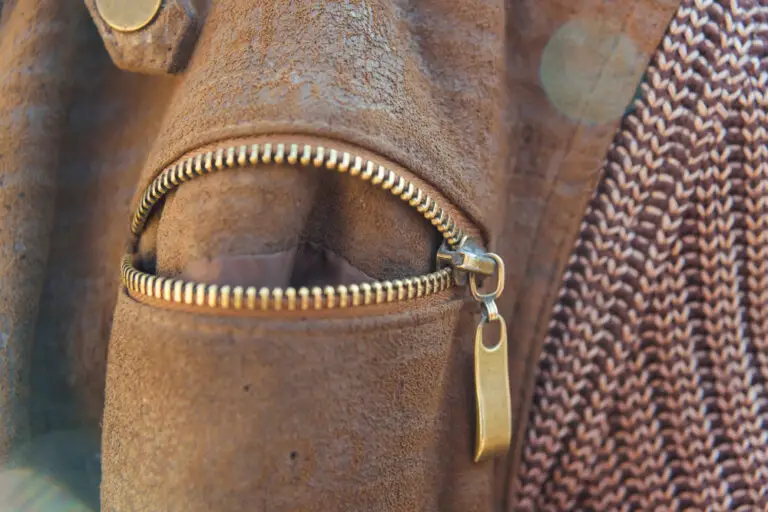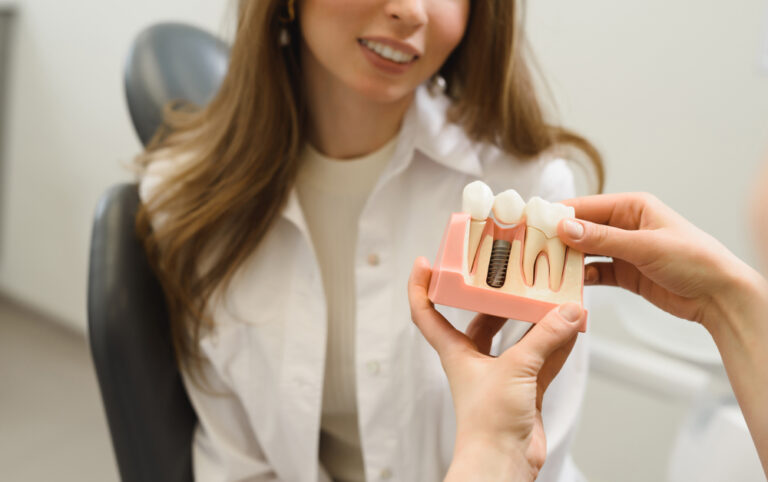Having loose or spaced out teeth can negatively impact your smile, oral function, and dental health. Many people want to know if it’s possible to naturally tighten teeth over time, or if orthodontic treatment is required. This detailed article explores the reasons teeth loosen, whether natural tightening is possible, approximate timelines, treatment options, and when to seek professional help for optimal tooth tightening.
What Causes Teeth to Loose Over Time?
Teeth are held firmly in the jaw bone by a network of tissues and fibers called the periodontal ligament. This ligament attaches between the tooth root and alveolar bone socket to anchor each tooth in place. Teeth naturally loosen over time as changes occur in the support structures:
Aging
As we age, bone density in the jaws decreases. The maxillary and mandibular bones lose mass and resorb, which loosens the fit of the tooth roots within the sockets. The periodontal ligament fibers also become more elastic with age, allowing teeth to have increased mobility.
Periodontal Disease
Chronic gum inflammation and infection called periodontitis damages the gums, periodontal ligament, and alveolar bone. The progressive bone loss around the tooth sockets leads to loosening. According to the CDC, nearly half of American adults over 30 have some form of periodontitis.
Injury or Trauma
Injuries to the teeth and jaw, such as sports collisions or blows to the mouth, can stretch and tear the periodontal ligament fibers. This damages the integrity of the tissues and allows teeth to feel looser in their sockets.
Bruxism
Ongoing grinding and clenching of the teeth applies excessive force against the teeth. This can fatigue and inflame the periodontal ligament over time, causing loosening. Bruxism often worsens with age and stress.
Orthodontic Treatment
The process of moving teeth through braces or clear aligners causes temporary loosening as the tissues remodel around the teeth. Teeth feel looser immediately after orthodontic movement, but gradually tighten again in the months after treatment.
Systemic Disease
Diseases like diabetes and osteoporosis that affect collagen formation, bone density, and wound healing can increase susceptibility to periodontitis and subsequent tooth loosening. Poor systemic health impairs the body’s ability to stabilize and heal the periodontium.
Factors That Influence Tooth Looseness
Some additional factors include:
- Tooth type – Single-rooted teeth like incisors and canines tend to develop more mobility than multi-rooted premolars and molars.
- Bite alignment – Teeth loosen more readily when bite forces are concentrated due to misaligned teeth or malocclusion. Properly aligned teeth distribute biting forces evenly and resist mobility.
- Restorations – Teeth loosen over time when they have large fillings, crowns, or other restorations due to reduced remaining tooth structure.
- Medications – Certain prescription drugs like antihypertensives, anticonvulsants, and corticosteroids increase gum disease risk and subsequent loosening.
- Clenching/grinding habits – Chronic parafunctional habits like bruxism overload the periodontal ligament and loosen teeth.
- Poor nutrition – Deficiencies in vitamin C, calcium, and other minerals impede periodontal tissue strength and healthy turnover.
Can Teeth Naturally Tighten Over Time?

Teeth generally have a strong potential to naturally re-tighten and stabilize over weeks to months after becoming loose. Here are some biological mechanisms that allow tightening:
Secondary Occlusal Trauma
When occlusal forces are eliminated due to tooth loss or orthodontic alignment, the traumatized periodontium regenerates. This process of repair is called secondary occlusal trauma, and results in reduced tooth mobility.
Bone Remodeling
The alveolar bone around the tooth sockets undergoes constant turnover called remodeling. Osteoclasts resorb old damaged bone, and osteoblasts form new bone. This regeneration can help sockets grip teeth more firmly.
Cementum Deposition
The root surfaces of teeth are coated with a calcified substance called cementum, which provides attachment for the periodontal ligament fibers. When teeth loosen, the body often deposits more cementum to reinforce attachment.
Periodontal Ligament Fiber Regeneration
The collagen fibers that tether teeth to the bone are continually renewed and replaced. This biological process allows new periodontal ligament fibers to form for tighter attachment.
Dental Compensation
In cases of minor tooth movement, the body recruits neighboring teeth to tip slightly and fill gaps. This dental compensation closes spaces and allows the pits to grip tighter.
Timeline for Natural Tooth Tightening
The process of natural tooth tightening occurs gradually over weeks to months. Here is an approximate timeline:
- Initial Looseness – Teeth will feel slightly elevated in their sockets for 1-2 months after orthodontic movement or trauma. Minor spaces between teeth may be noticeable.
- Gradual Tightening – After 2-3 months, most individuals sense a firmer tooth attachment as tissues regenerate. Looseness and spacing decrease slowly over time.
- Significant Tightening – By 6-9 months, significant tightening has occurred through bone remodeling and cementum deposition. Minor residual mobility may remain.
- Final Stabilization – It takes approximately 9-12 months for complete biological tightening and stabilization after teeth become loose. Full firmness and tight interproximal contacts return by 1 year.
- Delayed Progression – In some cases where age or disease impair healing ability, teeth remain loose indefinitely. Full tightness never returns.
Can Tooth Movement Therapies Help Tighten Teeth?
Specialized dental treatments can encourage faster and more effective tightening when natural processes alone are inadequate:
Clear Aligners
Popular orthodontic aligner brands like Invisalign apply light forces to gradually shift teeth. This can close small gaps up to 4-5mm and guide teeth into tighter alignment. Aligners are removable and do not affect speech.
Fixed Orthodontic Appliances
Traditional metal or ceramic braces use brackets, wires, elastics and other components to move teeth. Braces provide the greatest tightening capability for gaps beyond 5mm or bite problems.
Periodontal Splinting
Loose teeth can be stabilized together with composite resin, wire, or fiberglass splints. This allows tightening fibers to regenerate within a protected environment.
Occlusal Night Guards
Also called bite splints, these protect teeth from destructive forces during sleep that impair natural tightening. Guards shield the periodontium and allow tightening over months.
Medications
Specialized medications like Periostat (doxycycline) promote periodontal and bone healing. This facilitates tightening in cases of damage or disease.
Lasers
Low-level laser therapy applied to the gums can reduce inflammation and stimulate tissue healing and regeneration for better tightening ability.
When To Seek Orthodontic Treatment

Signs that orthodontic intervention is needed for optimal teeth tightening:
- Spaces between teeth exceed 3-4mm.
- Teeth drift noticeably over months or years.
- Biting function feels impaired due to looseness or spacing.
- Speech is affected by poor tooth alignment.
- Teeth flare out, drift, or protrude.
- Overall bite relationship feels uncomfortable.
Orthodontics not only straightens teeth for an improved smile, but tightens them securely in the jaw. Seek orthodontic treatment even into adulthood for best structural integrity and health. Modern options like clear aligners are very discreet.
Can Teeth Be Tightened Without Braces?
For minor tightening, options besides braces include:
- Clear aligners – Brands like Invisalign are removable plastic trays that use gentle forces to close small gaps up to 4mm. Treatment takes several months.
- Dental veneers – These thin porcelain shells bonded to the front of teeth can lengthen teeth and cover small spaces. Veneers do not change alignment.
- Composite bonding – Tooth-colored filling material can be sculpted onto teeth to cover small gaps without grinding down natural tooth.
- Permanent retainers – Fixed metal wires bonded behind the teeth hold them in position to prevent spaces from opening.
However, these options only mask or close minor gaps up to 2-4mm. Larger spaces or complete orthodontic alignment requires braces for maximum tightening.
Maintaining Tight Teeth Long-Term
Once teeth have been aligned and tightened orthodontically, retainers are critical for maintaining the results long-term. Removable retainers should be worn at night on an ongoing basis to prevent teeth from shifting and gaps recurring. Permanent fixed retainers can also be bonded onto the backs of top and bottom teeth for years to come, keeping them tightly in place. Proper retainer wear, avoiding hard or chewy foods, controlling oral habits like clenching or grinding, and seeing the dentist regularly for exams helps ensure tightened teeth remain intact lifelong.
Conclusion
Teeth generally have strong biological potential to naturally tighten over a period of months after becoming loose due to aging, disease, injury, or orthodontic movement. However, some cases require orthodontic intervention to achieve proper alignment and significant tightening, especially when gaps exceed 2-3mm. Clear aligner therapy, traditional braces, veneers, and retainers can all help keep teeth tightly in place for optimal oral function and a youthful smile. With good oral hygiene and dental care, tightened teeth can be maintained long-term.
Frequently Asked Questions
How do you tighten loose teeth naturally at home?
- Massage gums daily with oil to stimulate blood flow.
- Rinse with warm saltwater.
- Take vitamin C for collagen formation and mineral supplements like calcium.
- Drink green tea, which contains antioxidants to reduce inflammation.
- Apply cold compresses to swollen gums to reduce pain.
- Avoid very hard, chewy, or sticky foods that can aggravate loose teeth.
- Quit smoking, as this impairs periodontal healing.
- See your dentist to treat any underlying gum disease.
Can Invisalign close gaps of 5mm?
Invisalign can usually close spaces between teeth up to 5mm through sequential aligner treatment over 6-18 months. However, results depend on the particular tooth movement required. In complex cases, braces may be required in addition to Invisalign treatment for maximum tightening.
How long after braces are teeth tight?
Teeth will begin tightening within 1-2 months after braces removal as the periodontal ligament regenerates. However, full tightness and stability takes approximately 9-12 months to return as bone remodeling occurs. Wearing retainers properly helps facilitate complete post-braces tightening.
At what age is it too late to get braces?
There is no age limit for undergoing orthodontic treatment. Even elderly individuals in their 70s, 80s, or older can successfully and comfortably undergo braces or Invisalign treatment. The biological ability to move teeth and allow tightening does not decline with age. Customized plans make orthodontics feasible at any age.
Can teeth shift after braces in adults?
Yes, teeth can still shift in adults after braces if proper retainer wear is not maintained. Consistently wearing removable retainers or fixed wires every night prevents teeth from rotating or spacing out. Lifelong retention is critical after orthodontics, even into mature adulthood, to sustain tightly aligned teeth.






